This updated post addresses the question of when is the virus mitigated, or even better when it is contained, and eventually when should restrictions be relaxed. So we look at South Korea compared to the nine worst plagued countries in the world (see post from yesterday on the “big nine”). We then look at three other countries in East Asia that were near China and had to deal with the virus sooner than most. We then look at a few other countries that appear to getting the virus under control. I think there is considerable value here in comparing results across several countries. All these are simple graphs pulled from the Johns Hopkins CSSE website as of 09:33:07 AM: Johns Hopkins CSSE
Here is the graph for the number of cases in South Korea, population 52 million. They have 11,668 reported cases. This is clearly what controlling the virus looks like. They have had a total of 273 deaths, for a mortality rate of 2.34%
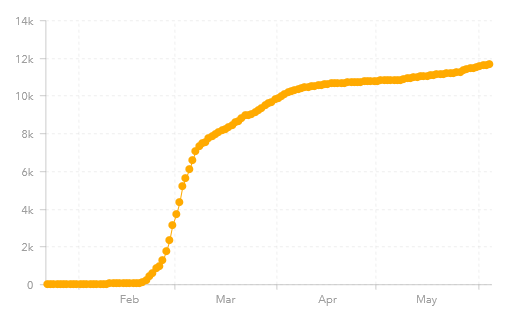
This is good. This looks like a country that now has the situation under control. Note how long it took (time is on the x-axis).
In comparison, are the United States (1,874,411 reported cases), Brazil (614,941 reported cases) , Russia (449,256 reported cases), United Kingdom (283,080 reported cases), Spain (240,660 reported cases), Italy (234,013 reported cases), India (229,594 reported cases), France (189,569 reported cases) and Germany (184,924 reported cases). It looks like Spain, Italy, France and Germany are bringing the virus under control. The United States, Brazil, Russia and India clearly have not. The graphs from yesterday are in this post:
In contrast here are the graphs for three other East Asian nations, Japan (16,949 cases and 913 deaths), Taiwan (443 cases and 7 deaths) and Vietnam (328 cases and still no reported deaths). It took Japan longer to bring the virus under control that South Korea, but it appears like they have done. This is a country with a population of 126 million people.

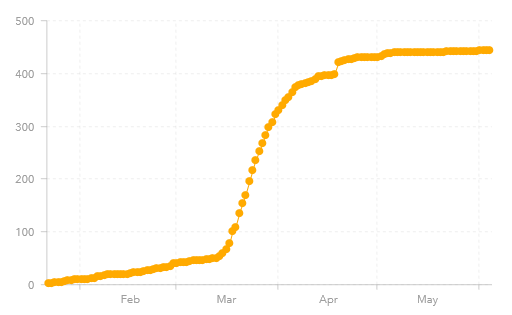
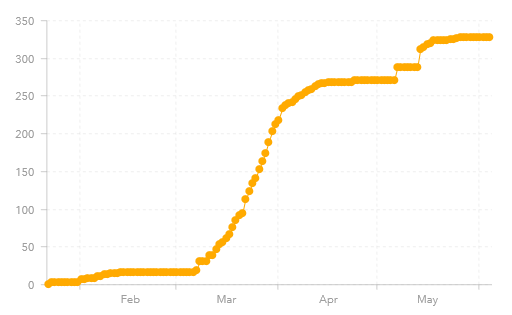
And here is China, the original source of the virus. They have 84,174 reported cases and 4,638 reported deaths, although there is still some concern about the accuracy of their statistics:
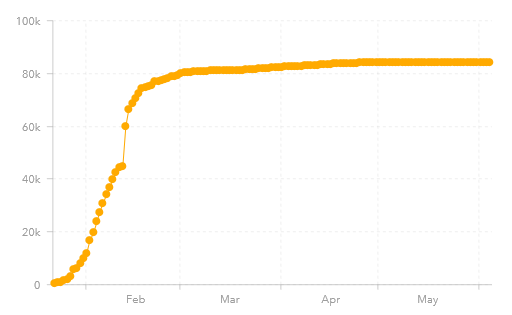
Finally, let me add to this collection of graphs Austria (16,843 reported cases and 672 deaths), Denmark (12,075 reported case and 586 deaths), Czech Republic (9,494 reported cases and 326 deaths), Norway (8,504 reported cases and 238 deaths), Australia (7,251 reported cases and 102 reported deaths), Iceland (1,806 reported cases and 10 deaths), and New Zealand (1,504 reported cases and 22 deaths). It appears that they have all bringing or have actually brought the virus under control.

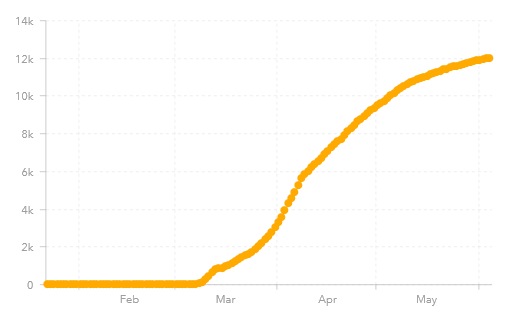
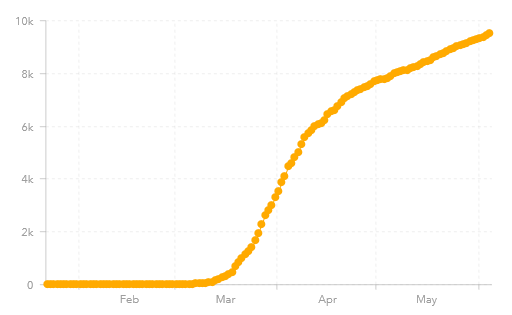

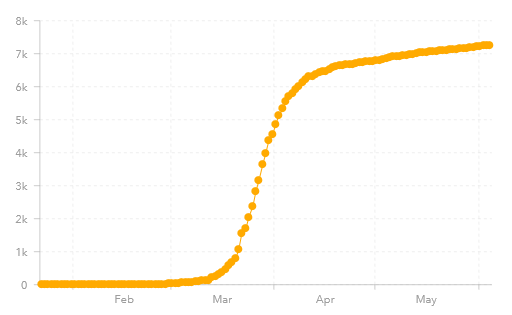
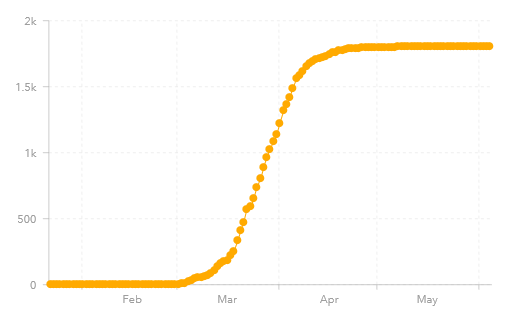
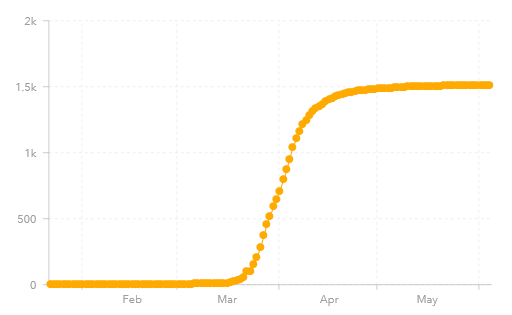
And then there is Singapore. Seven weeks ago it had 3,614 reported cases. Six weeks ago it had 11,178 reported cases. Four weeks ago it had 21,707 reported cases and 20 reported deaths and as of now it was 37,183 reported cases and 24 deaths. It appears that they still do not have control of the situation.
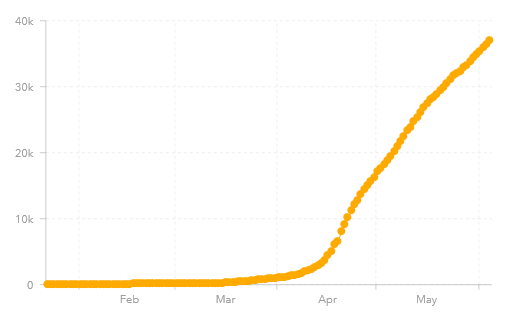
And finally there is Sweden, which I gather did not do any lockdown procedures. They have 41,883 reported cases and 4,562 deaths. Compare their graph and their stats to their neighbors Denmark and Norway.

